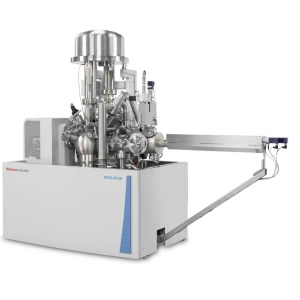Understanding the chemical and electronic
properties of OLED materials with XPS
Organic LED (OLED) displays are expected to be the future of the display industry. OLED displays typically draw less power than the displays currently available on the market. As a result, portable screens would be able run for longer from a single battery charge. One OLED material is poly (9,9-dioctylfluorene) or PFO. PFO is a high brightness, blue-light emitting material with a low turn-on voltage. It has a large optical gap,1
however, and that means that in order to make the most of its potential for OLED displays, the overall design of the OLED device has to be carefully developed and controlled to prevent any adverse interaction with charge carriers in PFO films.
To understand the interaction of PFO with charge carriers, it is necessary to understand the electronic structure of PFO itself. This requires a multitechnique analytical approach. Thermo Fisher Scientific offers XPS instruments, such as ESCALAB and Nexsa, which can be configured with multitechnique options, allowing much of the electronic structure of PFO to be investigated with a single tool.
Read the APPLICATION NOTE below to learn more!
APPLICATION NOTES
Related Products
XPS X-Ray Photoelectron Spectroscopy
XPS X-Ray Photoelectron Spectroscopy


